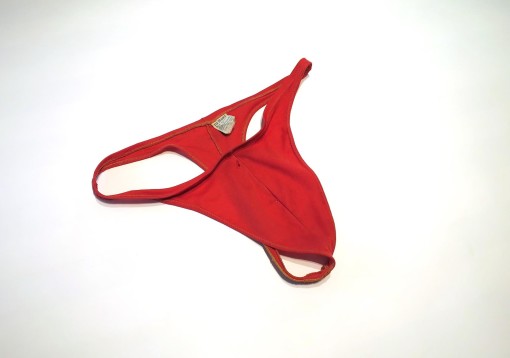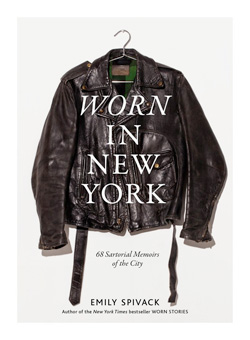
Ian Were
Clothes take on part of the wearer, a memory by way of perspiration, blood, or traces of other bodily liquids, evident through a scent or stain. Small scenarios like that particularly apply to our intimate wear. Sweat, urine and preseminal and vaginal fluids leaking a little into our underclothes can be found almost at any time, notably following arousal — resulting in that familiar musky odour. This simple occurrence has led to many a story, often salacious. In the mid-1970s, for example, a female friend of mine would, from time to time — perhaps after she’d separated from her boyfriend at a party and they’d arrived home the next morning at different times — put his underpants to her nostrils and say: ‘Who’d you fuck last night?’ (She’d rarely use the term ‘have sex with’ although sometimes she’d say ‘have congress’.) It was playfully inquisitorial and said without malice. Just a game really, a little provocation, a perversion. On most occasions she was not innocent herself and both knew this.
Around the same time, I had a lover who nearly always wore white Bonds ‘Cottontails’. When she was dressed in tight jeans you could just see the outline of them, more so if she’d put on sheer white pants. She insisted on lengthy foreplay: standing fully clothed we’d take each other in our arms and caress, sometimes facing, sometimes spooning. At the same time we’d slowly remove an item of clothing from each other until we were left in our underpants . . . I was infatuated with her body, face, voice and laugh, the way her clothes fitted her and the way she moved in and out of them and, not least, by her scent. Wanting to retain the memory of these encounters, I frequently didn’t wash or change my underwear for several hours after spending a night with her. The sweet smell of her sex on me — hers and mine mixed together — would keep the memory alive the following day. Sometimes I’d call her and say in a half-whisper: ‘I still have you on me’, meaning both on my flesh and fabric. I’d shower later, just before her scent turned sour.
Clothes also take on a fiction of their own. While staying in New York City near Columbia University in the summer of 1981, I came across a bright-red G-string left in the washer of a laundromat on the edge of Harlem. They weren’t new — the elastic had started to go — but the fabric was slightly shiny with a newly-soaped smell. For some reason, I kept them. Whose were they? What was the person like? Was it the wearer who washed them or his girlfriend or boyfriend? What did he do in them? While the idea of wearing the briefs had some pruriency, I wore them once only; maybe twice. My girlfriend took a couple of photos — imagining, she said, what other penis had inhabited them. I still have the Harlem reds; they’re labelled ‘De Hart Mid Breef by Rich originals, 100% Nylon’. Much later, I picked up a dark grey, male string-brief from the laundry floor of the motel-apartments in Brisbane where I was staying one summer. I still have this item as well. It’s labelled ‘HOM, Made in France, 65% Cotton, 25% Polyamide, 10% Elastanne’. I thought that a collection of found male underwear might be the start of an art work — multiples displayed as an installation with a little didactic information including the location and date and an invented text to go with each one.
Sweat memories. Sweet memories.


As a former textile conservator, I am thrilled by the Worn Stories concept. Next to preserving historically significant textile items of all kinds, another aim of textile conservation is to record so-called historical evidence, traces of use such as creases, stains, alterations and damage. These can be essential for the correct interpretation of an object and its story. Then follows the decision-making process: to preserve this evidence or remove it to improve the condition and/or appearance of the textile. All depends on the significance of the textile and its evidence. So it is very gratifying to read of everyday contemporary ‘historical evidence’ being appreciated in this way. Ian’s undies (sorry, couldn’t resist) are examples of two extremes: clothing items whose history and use is current and fully known (and relished) and the found items, cleansed of their evidence of use but whose origin is clear from the factory label but provenance limited to where and when they were found and by whom they are now kept. And the story of these two items is not yet over: who knows what the future holds.